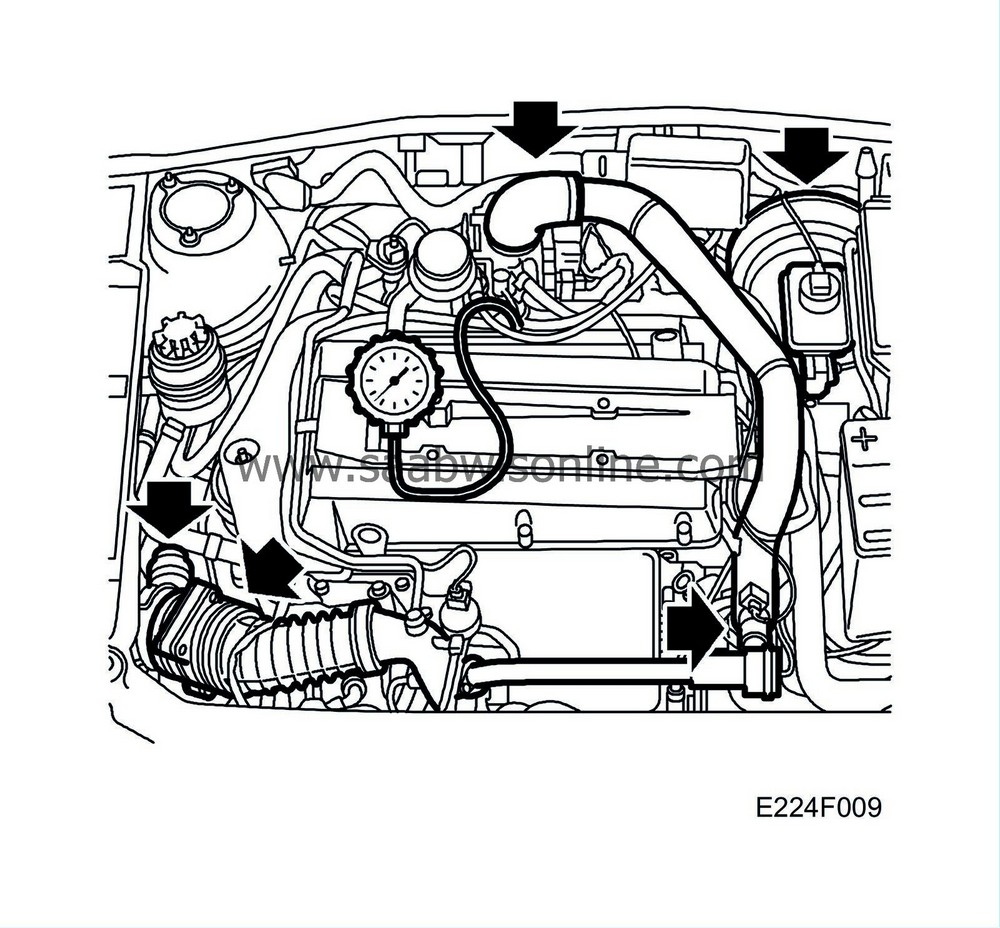P1181
Read the instructions below then
start the fault diagnostic procedure.
Symptom: CHECK ENGINE comes on after two driving cycles.
Engine may stop after starting, run unevenly and misfire, or idle speed too fast.
Long Term Fuel Trim Additive. Max Value, Air/Fuel too Lean.

Fault symptoms
|
•
|
CHECK ENGINE comes on after two driving cycles.
|
|
•
|
Engine may stop after starting, run unevenly and misfire, or idle speed too fast.
|
Conditions
The following conditions apply for this DTC:
|
•
|
Engine running and closed loop control is active.
|
|
•
|
Additive adaptation above 10 mg/c for more than 30 s.
|
|
Note
|
|
The condition for additive adaptation is that a multiplicative adaptation has first been performed during the present driving cycle.
|
|
Note
|
|
P1171, P0171 and P1181 may be generated if the heated oxygen sensor input is shorted to ground, as there is no diagnosis for this fault.
|
Diagnostic help
At idling speed, the engine's fuel requirement has been 25 % higher than that computed by the control module on the basis of information from the mass air flow sensor.
Fault diagnosis first determines whether the pressure sensor readings are approximately the same when the ignition is ON, as the mass air flow sensor is later compared with the intake air pressure. If the pressure sensors are OK but the mass air flow sensor reading is incorrect, first check for any air leaks after the throttle and after that, replace the sensor.
If the mass air flow is OK, then the fuel supply must be checked, i.e. pressure, pressure response, pump flow and then the injectors.
Diagnostic tool functions related to this fault are:
|
•
|
Additive adaptation, in mg/c.
|
|
•
|
Short term fuel trim, in %.
|
|
•
|
Purge adaptation, in %.
|
|
•
|
Airmass deviation from calculated, in %.
|
See also the description of test values under ”Fault diagnosis, general” for more information.
Check the wiring
|
Note
|
|
Jiggle the leads and in-line connectors at various points and in different directions to detect any intermittent breaks or short circuits in the wiring. Observe the multimeter, test lamp or diagnostic tool while doing this.
|
Diagnostic procedure
See diagnostic procedure P0172, see
 .
.
 .
.



